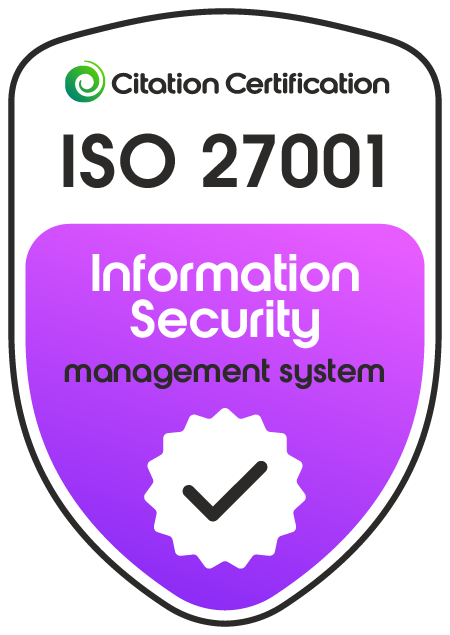By Chris Kendall
•
March 26, 2025
The modern business landscape can often be akin to a battlefield. Hostile takeovers, strategies to gain or reclaim market share, even secret weapons to obliterate competitors. And in this highly-competitive business environment, as in battle, the only thing more damaging than incoming enemy fire is accidental friendly fire. With rapidly accelerating technology and far more sophisticated attack vectors, financial fraud has re-emerged as a silent yet devastating threat to businesses. We delve into the what, where, why and who of financial fraud plus how to protect your franchise or multi-site business. Magnitude of Loss Imagine losing 5% or more of your annual revenue to fraud - potentially hundreds of thousands or even millions of dollars in lost revenue. While this has a considerable impact on the bottom line, the costs extend way beyond profit and loss. It erodes the financial resources that fuel growth and innovation. Particularly for larger, multi-site or franchise operations, the compounded effects of such losses can derail strategic initiatives, restrict reinvestment opportunities, and severely undermine operational stability. Plus, the repercussions inflicted by financial fraud extend far beyond immediate financial losses. Fraud can irreparably damage your brand's reputation, destroy investor confidence, and expose the company to costly legal battles that divert focus from growth and innovation. Common Fraud Schemes in Franchise Operations Franchise operations face a variety of financial threats, from inventory theft to financial statement fraud. Below are some of the most common types that can infiltrate your business. Inventory Theft One of the most visible forms of fraud, inventory theft, involves the unauthorised removal of physical assets. Whether it’s products disappearing from storage or supplies being siphoned off by insiders, this form of fraud significantly depletes your business’s resources. For franchises, where inventory is a crucial part of operations, such losses can have a profound impact on profitability and their supply chain. Cash Skimming Cash skimming is slightly more subtle yet an equally dangerous mechanism for fraud. This occurs when employees manipulate cash transactions – often by underreporting sales or pocketing the difference. The impact is two-fold: not only is revenue lost, but the actual cash flow is distorted, making it harder to track and reconcile funds accurately. Over time, these discrepancies can accumulate, leading to major financial shortfalls. Expense Fraud Expense fraud involves the submission of falsified or exaggerated expense claims. This might include inflating costs or claiming expenses that never occurred. For a franchise with multiple locations, keeping tabs on such discrepancies can be challenging. If left unchecked, expense fraud not only erodes profit margins but also undermines the trust between management and employees. Payroll Manipulation Payroll manipulation involves creating fictitious employees or falsifying overtime records. The result is an artificially inflated payroll that drains financial resources. In franchises, where payroll processing might be decentralised, detecting such manipulations requires vigilant internal controls and regular audits to ensure every payroll entry is justified and accurate. Financial Statement Fraud Perhaps the most insidious form of fraud is financial statement fraud, where financial performance is deliberately misrepresented. This can involve inflating revenue figures, understating liabilities, or manipulating expenses to create a misleading picture of financial health. For franchise operations, which often rely on investor confidence and stakeholder trust, such misrepresentation can have far-reaching consequences, jeopardising both credibility and long-term viability. Building a Strong Internal Control System Recognising these fraud schemes is only half of the battle. The next step is to implement targeted detection and prevention measures across all departments and locations. Segregation of Duties Segregating duties is one of the more effective ways to prevent fraud, and one we implement regularly with clients. The concept is simple yet powerful: no single employee should have complete control over every aspect of a financial process. When responsibilities such as initiating transactions, recording them, and reconciling accounts are distributed among different individuals, it becomes significantly more difficult for errors or intentional misconduct to go undetected. This division creates a natural system of checks and balances. For example, if one employee is responsible for recording financial transactions while another handles reconciliation, any discrepancies between the two processes can be quickly identified and investigated. This not only minimises the risk of fraud but also reinforces a culture of accountability within the organisation. By ensuring that duties are properly segmented, companies safeguard against the misuse of power and create a more secure operational environment. Implementation: Step 1 - Division of Responsibilities: Break down the financial process into distinct functions such as transaction initiation, recording, and reconciliation. Step 2 – Role Delegation: Assign specific roles to different team members and ensure that their responsibilities do not overlap. For example, the person who approves invoices should not be the one processing payments. Step 3 - Regular Review: Periodically review role assignments and access rights to ensure they remain appropriate as the business scales or evolves. Step 4 - Cross-Training: While duties are segregated, cross-training employees can help maintain flexibility and ensure continuity during absences, while still upholding checks and balances. Regular Financial Audits Regular financial audits are a critical pillar in the internal control system, acting as both a preventive and detective measure. Audits can be categorised into scheduled reviews and surprise inspections, each serving its own purpose in maintaining financial integrity. Scheduled audits provide a structured approach to evaluating financial processes, ensuring that standard procedures are consistently followed and that records are accurately maintained. In contrast, unannounced audits introduce an element of unpredictability, encouraging employees to maintain high standards at all times, knowing that any irregularities could be discovered at any moment. External auditors add an additional layer of scrutiny by bringing an unbiased perspective to the table. Their independent assessments can reveal hidden issues that internal teams might overlook, thus ensuring that the company’s financial practices adhere to the highest standards. The combined effect of regular and surprise audits is a comprehensive oversight mechanism that not only detects potential problems early but also acts as a deterrent against fraudulent activities. Advanced Technology Solutions Leveraging advanced technology, such as integrated financial management systems and real-time monitoring tools, enables businesses to detect anomalies as they occur. These technologies consolidate data across operations, providing a unified platform for immediate identification and response to fraud. The introduction of artificial intelligence and machine learning into the financial realm has revolutionised fraud detection. These technologies analyse large volumes of data to identify unusual patterns or behaviours that could indicate fraudulent activity, providing predictive insights that enable companies to act before issues escalate. Moreover, cloud platforms play an integral role by offering scalable solutions with robust security features. They ensure that sensitive financial data is protected through advanced encryption and access control protocols, while also facilitating seamless data integration across multiple locations. This technological infrastructure not only enhances security but also drives operational efficiency by automating routine processes and reducing the likelihood of human error. Technology is a game-changer in maintaining a strong internal control system. Integrating modern tools can streamline financial processes and provide real-time oversight. Comprehensive Employee Training Even the most sophisticated systems can fall short without the active participation and vigilance of employees. Comprehensive training programs are vital in ensuring that staff members understand both the mechanics of the internal control system and the importance of adhering to ethical practices. Regular ethics workshops serve to educate employees about the potential risks and consequences of fraud, instilling a sense of responsibility and commitment to the company’s financial integrity. These sessions go beyond mere compliance; they foster a culture where integrity is valued and unethical behaviour is not tolerated. Equally important is the establishment of clear, confidential reporting channels. When employees feel safe and supported in reporting suspicious activities, they become active participants in the organisation's defence against fraud. Such reporting mechanisms not only help in early detection but also build a transparent work environment where issues can be addressed promptly and effectively. Training empowers employees with the knowledge and tools they need to recognise, report, and prevent fraudulent activities. Reinforcing the internal control system from the ground up. Proactive Fraud Prevention Strategies Fraud prevention is an ongoing, proactive effort that involves more than just reacting to incidents – it’s about anticipating risks, establishing robust systems for detection, and implementing clear protocols for swift action. 1. Risk Assessment Framework Conduct Detailed Risk Assessments Across All Locations Begin by conducting thorough risk assessments at every operational site. Each location presents unique challenges and vulnerabilities, so it’s crucial to examine internal processes, external market conditions, and the effectiveness of existing controls. Gather quantitative and qualitative data from financial records, employee interviews, and previous audit reports. This information is essential to map out potential fraud hotspots and help prioritise high-risk areas. Finally, establish a schedule for periodic risk assessments to ensure that your strategies remain aligned with emerging threats. Identify Specific Vulnerabilities and Develop Tailored Mitigation Strategies Not every location or department is at the same risk level. Analyse the unique operational, technological, and human factors in each area to identify vulnerabilities. This might include weak access controls, inadequate separation of duties, or lack of oversight in high-volume transactions. Use these insights to develop specific strategies to address potential vulnerabilities: Enhanced Controls: Strengthen internal controls such as segregation of duties and regular reconciliations. Technology Integration: Introduce advanced monitoring systems and analytics tools to detect unusual activities. Policy Updates: Revise internal policies and procedures based on the risk assessment outcomes, ensuring they are robust and up-to-date. 2. Clear Reporting Mechanisms Create and Promote Confidential Whistleblower Programs Employees need to feel safe reporting suspicious activities without fear of retribution. Even if you don’t have a well-structured whistleblower program, implementing secure, anonymous channels will help employees overcome the fear of personal consequences. This might include hotlines, online portals, or third-party reporting services – any mechanism that ensures concerns can be reported confidentially. Regularly communicating the availability and importance of these resources through training sessions, internal communications, and leadership endorsements, will also increase the likelihood they are utilised by your teams to report any unwanted or fraudulent behaviour. Design Transparent Investigation Protocols to Build Trust Develop and publicise detailed investigation protocols that outline how reported incidents will be handled. Including the steps taken from initial report to final resolution. Greater transparency in the process will increase compliance and reduce instances of fraud due to the perceived heightened risk of being caught. You may also want to consider involving an independent committee or external investigators to review reports and conduct investigations. This independent oversight helps in maintaining objectivity and credibility in the process. Lastly, providing periodic reports on the number of cases reported and the outcomes, ensuring that the process remains transparent and that lessons learned are integrated into future prevention strategies. 3. Rapid Response Protocols Prepare an Incident Response Plan that Outlines Immediate Actions and Responsibilities Detailed Response Plan: Create a comprehensive incident response plan that clearly defines the steps to be taken when fraud is detected. This plan should cover everything from immediate containment measures to longer-term recovery strategies. Roles and Responsibilities: Clearly assign responsibilities to team members across various functions, ensuring that everyone understands their role in the response process. Define who will lead the investigation, manage communications, and liaise with external parties. Predefined Scenarios: Develop response protocols for different types of fraud incidents (e.g., cash skimming, payroll manipulation, or financial statement fraud). Having scenario-specific procedures enables a swift and appropriate reaction. Training and Drills: Regularly conduct simulation exercises and training sessions so that your team is well-prepared to implement the response plan effectively. These drills help identify potential gaps in the plan and ensure that everyone is ready to act under pressure. Define Communication Channels with Legal, HR, and IT Departments Effective fraud response requires seamless coordination between legal, HR, IT, and other relevant departments. By clearly defining communication channels, information can flow quickly and efficiently across teams. Including direct lines to legal counsel and compliance officers can help in identifying when fraud needs to be reported to regulatory authorities and ensure that all legal requirements are met promptly. There needs to be a crisis communication strategy that clearly outlines how to communicate internally and externally during a fraud incident. This includes notifying stakeholders, managing media inquiries, and protecting the organisation’s reputation. To better align departments and coordinate their response, businesses will need to establish a protocol for regular update meetings during an incident. These meetings help to monito progress, address emerging issues, and make informed decisions. When Fraud is Discovered: Immediate Steps When fraud is uncovered, every moment counts. Acting swiftly and decisively is essential to minimise damage and set the stage for recovery. Containment The primary goal in the initial phase is to secure your organisation’s assets, preserve evidence, and prevent further damage. Secure Financial Records: Immediately isolate financial records and sensitive data. Lock down databases and systems that store transaction details, ensuring that no additional unauthorised access or alterations occur. This not only protects your data but also ensures that evidence remains intact for further analysis. Restrict Access to Compromised Systems: As soon as suspicious activity is detected, restrict access to affected systems. Disable user accounts associated with the breach and implement temporary access controls. This precaution helps to limit the scope of the fraud and stops the perpetrator from further exploiting vulnerabilities. Preserve All Evidence: Document every detail of the fraudulent activity as soon as it is identified. This includes preserving digital logs, emails, transaction histories, and any physical evidence that may be relevant. Professional Investigation Engaging the right experts and meticulously documenting findings are essential to uncover the full extent of the fraud and identify the responsible parties. Engage Forensic Accountants: Bring in forensic accounting professionals who specialise in fraud detection and investigation. They can analyse financial records with a keen eye, identify irregularities, and trace the movement of funds to determine how the fraud was executed. Document All Findings Thoroughly: Every detail matters. Ensure that all findings, from initial anomalies to detailed analyses, are documented comprehensively. Collaborate with Internal Teams: Work closely with internal audit teams and IT departments to consolidate all available data. This collaboration ensures that no piece of evidence is overlooked and helps create a holistic view of the fraud incident. Legal & Regulatory Compliance Ensuring compliance with legal and regulatory requirements is crucial to protect the organisation from additional liabilities and to facilitate any necessary legal actions. Consult with Legal Experts: Immediately involve legal counsel experienced in financial fraud. Their expertise is critical in navigating the complex regulatory landscape and ensuring that every action taken is legally sound. Inform Necessary Authorities: Depending on the severity of the fraud, it may be necessary to report the incident to regulatory bodies and police. Timely reporting not only complies with legal obligations but also helps in initiating broader investigations that might recover lost assets or prevent further occurrences. Review Internal Policies: Conduct a rapid review of existing internal policies and procedures to ensure they align with regulatory standards. This review can identify any gaps or vulnerabilities that may have contributed to the fraud and provide a roadmap for immediate improvements. And finally, running annual fraud risk assessments, continuous employee training, embracing technological advances in financial management and fraud detection, and enacting a zero-tolerance policy regarding financial misconduct, will all contribute to building a fraud-resistant business. If you have concerns about your business’s exposure to any form of financial fraud, our team can support you in building robust systems and processes to mitigate these risks. From accounting and bookkeeping, financial management and segregation of duties, to IT and systems management and incident response protocols.

















